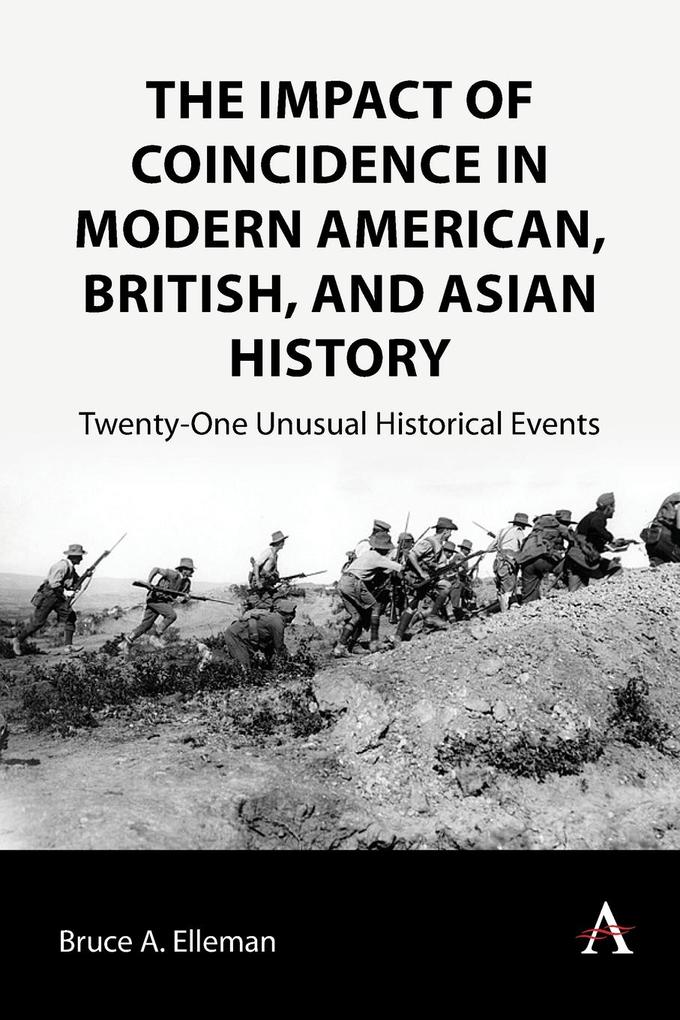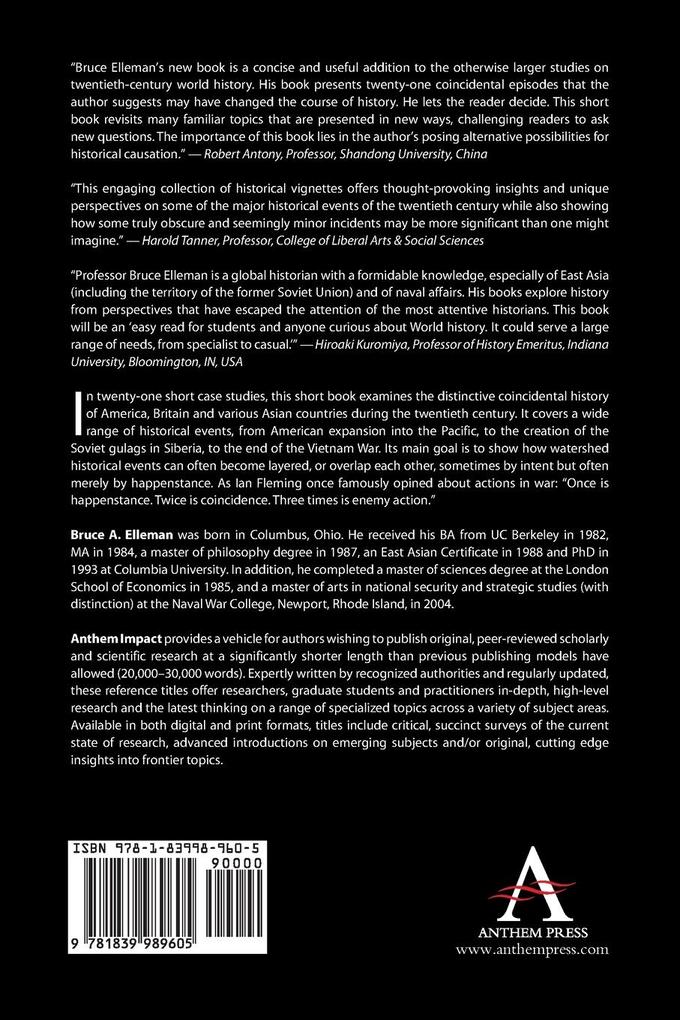
Zustellung: Mo, 26.05. - Fr, 30.05.
Versand in 6 Tagen
VersandkostenfreiBestellen & in Filiale abholen:
In 21 case studies, this short book examines the distinctive coincidental history of America, Britain, and various Asian countries during the twentieth century.
Inhaltsverzeichnis
Introduction: The Unintentional Role of Coincidence in History; 1) Secret U.S. Plans to Absorb Hawaii and Guam (1897); 2) Alfred Thayer Mahan Invents Island-hopping (1911); 3) Yuan Shikai Preapproves Japan's "21 Demands"(1915); 4) Gallipoli's Unexpected Connection to the Arme; ian Genocide (1915); 5) The Historical Importance of 7 December 1902/1917/1941; 6) The Halifax Explosion and Unification of the U.S. and British Navies (1917); 7) Woodrow Wilson's Clerical Error and the May Fourth Movement in China (1919); 8) Soviet Gold Mining and the Sudden End to the Mongolian Gold Rush (1924); 9) The Soviet Great Purges and Gulags as a Reaction to Japan's Immigration Policies in Manchukuo (1937); 10) Secret Western Manipulations behind Japan's Pearl Harbor Attack (1941); 11) The True Origin of the Kamikazes (1944); 12) Why the Kurile Islands Were Disputed After World War II (1945); 13) How Secret Yalta Talks Resulted in Post-War Soviet Colonization (1945); 14) Secret Negotiations of the Sino-Soviet Border (1945); 15) The CIA Argument for Why China Should be Allowed to Become Communist (1948); 16) Both North Vietnamese Tonkin Gulf Attacks Were Perhaps Real (1964); 17) The U.S. Anti-Soviet Blockade during the Vietnam War (1965); 18) The Secret U.S. Anti-SAM Strategy in the Vietnam War (1966); 19) The 3 March 1969 Creation of the Top Gun School (1969); 20) The Real "Signaling" History of the 4 May 1970 Kent State Massacre (1970); 21) The Secret Agreement that May Have Really Ended the Vietnam War (1975); Conclusions: The Profound Influence of Coincidental History on Twentieth-Century History; Selected Bibliography; About the Author; Index
Mehr aus dieser Reihe
Produktdetails
Erscheinungsdatum
10. Oktober 2023
Sprache
englisch
Seitenanzahl
112
Reihe
Anthem Impact, 1
Autor/Autorin
Bruce A. Elleman
Verlag/Hersteller
Produktart
kartoniert
Gewicht
175 g
Größe (L/B/H)
229/152/6 mm
ISBN
9781839989605
Entdecken Sie mehr
Bewertungen
0 Bewertungen
Es wurden noch keine Bewertungen abgegeben. Schreiben Sie die erste Bewertung zu "The Impact of Coincidence in Modern American, British, and Asian History" und helfen Sie damit anderen bei der Kaufentscheidung.
































